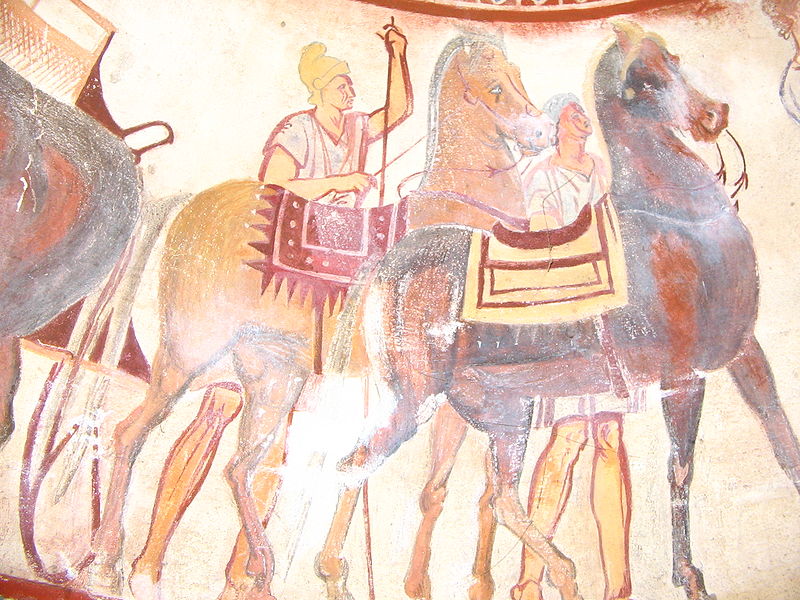Thracian Tomb of Kazanlak, Kazanlak

Facts and practical information
Nestled in the historic town of Kazanlak, Bulgaria, the Thracian Tomb of Kazanlak is a remarkable monument that offers a unique glimpse into the ancient Thracian culture. This UNESCO World Heritage site, dating back to the 4th century BCE, is an extraordinary example of early Hellenistic art and architecture in the Balkan region.
The tomb is part of a larger Thracian necropolis and was discovered in 1944 near the modern city of Kazanlak. It is renowned for its well-preserved frescoes that adorn the walls of the burial chamber and the narrow corridor leading to it. The vibrant paintings depict scenes of Thracian rituals and culture, providing valuable insights into the life and beliefs of this enigmatic civilization.
Visitors to the Thracian Tomb of Kazanlak will find a dome-shaped brickwork structure set into a tumulus – an artificial mound. The main chamber, where the Thracian ruler was laid to rest, is a testament to the remarkable craftsmanship of the builders and artists who created it. The frescoes, which have retained much of their original color and detail, are considered some of the finest examples of early Hellenistic art.
Due to the delicate nature of the site, the original tomb is not open to the public to preserve its integrity. However, a precise replica has been constructed nearby, allowing tourists to experience the tomb's interior without causing damage to the ancient artwork. This replica provides an authentic feel of the space and the artistry of the Thracians.
The Thracian Tomb of Kazanlak is situated in the Valley of the Thracian Kings, an area rich in archaeological finds. It is easily accessible from the city center of Kazanlak and is a must-see for history enthusiasts and those interested in ancient cultures. The site is a testament to the sophistication of Thracian society and its interactions with the Greek and Macedonian worlds.
Thracian Tomb of Kazanlak – popular in the area (distance from the attraction)
Nearby attractions include: Tomb of Seuthes III, Rose Valley, Ostrusha mound, Thracian tomb Griffins.














